Insa Art Space (인사미술공간)
1.1 Km 1867 2021-02-19
89, Changdeokgung-gil, Jongno-gu, Seoul-si
+82-2-760-4722
Insa Art Space(인사미술공간) a été construit par le gouvernement dans le but de soutenir les artistes ayant des difficultés financiers.
Ouvert le 26 mai 2000, le budget de la totalité des prestations des expositions est fourni par le gouvernement.
Cette action est reconnue comme étant la politique de soutien de l’art national la plus réussie.
En majeur partie des oeuvres modernes et expérimentales y sont exposées afin de dynamiser l’art.
Les conservateurs sont à la recherche de la situation présente des milieux d’art.
Par ailleurs, il y a de nombreux projets d’expositions ouvertes afin de repérer de nouveaux artistes talentueux.
Ceux qui sont sélectionnés peuvent exposer leur travail gratuitement pendant 2 semaines.
Ces actions ont pour but d’aider à lancer les artistes démunis qui ne peuvent démarrer leur carrière.
Vous pouvez visiter le lieu sans douter de la sincérité des oeuvres exposées.
Ce qui est exposé n’est évalué que sur la qualité.
Chaque année, 2 à 3 expositions internes et internationales sont produites ainsi que des symposiums et des échanges sous forme de dialoques avec les artistes.
En général, il y a une présence d’un conservateur et de 2 assistants conservateurs.
Insa Art Space un lieu super pour les voyageurs qui souhaitent passer une longue et bonne journée.
La plupart des galeries ferment entre 17h et 18h, mais Insa Art Space entre 19h/ 20h.
Il est localisé dans la rue coréenne traditionnelle, Insadong, ainsi, il y plein de choses à voir et à faire, tout en visitant la galerie.
Seongbuk-dong Jip(성북동집)
1.2 Km 25 2020-12-24
4 Seongbuk-ro 24-gil Seongbuk-gu Seoul
+82-2-747-6234
This restaurant in Seongbuk-dong is famous for its Kalguksu (chopped noodle soup) and dumplings. This restaurant's signature menu is noodle soup. This Korean dishes restaurant is located in Seongbuk-gu, Seoul.
Seongbuk-dong Jip (성북동집)
1.2 Km 2285 2021-03-29
4, Seongbuk-ro 24-gil, Seongbuk-gu, Seoul
+82-2-747-6234
This restaurant in Seongbuk-dong is famous for its Kalguksu (chopped noodle soup) and dumplings. This restaurant's signature menu is noodle soup. This Korean dishes restaurant is located in Seongbuk-gu, Seoul.
Parc Waryong (와룡공원)
1.2 Km 2141 2020-07-15
192, Waryonggongwon-gil, Jongno-gu, Seoul
+82-2-2148-2845
Situé à Myeongryun-dong (Séoul), et établit en 1984, le Parc Waryong se trouve près de Malbawi, l’un des plus beaux endroits pour admirer Séoul. Le Parc est proche de destinations touristiques naturelles telles que les Parcs Samcheong et Changgyeong et le Mont Bukak.
Bien qu’il fut difficile d’y faire pousser des arbres (de même dans d’autres parties du pays) en raison de la platitude du sol, de nombreux citoyens participèrent à une campagne nationale pour en planter plus de dix millions à travers le pays. Cela a eu pour effet de transformer des endroits tels que Waryong en des zones luxuriantes remplies de plantes à fleurs.
Les fleurs du printemps font jaillir les assortiments de couleurs des cerisiers, des fleurs d’abricotiers, des azalées et des forsythias, faisant du parc une destination populaire pour les familles. Il y a aussi une variété d’excellentes installations : des terrains de badminton, des lieux pour l’aérobic, des équipements pour le fitness, et des pavillons, merveilleux pour les exercices, la marche ou pour simplement se reposer.
Un célèbre chemin de randonnée, entre la Muraille de Séoul et le Parc Samcheong, passe à travers le parc. Bordé de cerisiers, ce chemin attire une foule d’amoureux de la nature toute l’année mais particulièrement au printemps. Il passe aussi par la Muraille au Mont Bukak.
Bukchonmaru hanok guesthouse [Korea Quality] / 북촌마루한옥게스트하우스 [한국관광 품질인증]
1.2 Km 17946 2020-09-10
152, Changdeokgung-gil, Jongno-gu, Seoul
+82-10-3253-8751
Bukchonmaru Hanok Guesthouse is located between “Bukchon Views 2 and 3” on a hill in Bukchon Village in Seoul. This two-storied hanbok building with a terrace, which is rarely found among other hanok structures in the area, offers a splendid view of Seoul. In particular, the summit of a hill next to the main gate of Choong Ang High School where the guesthouse is situated is known as the filming location for the famous Korean TV series Winter Sonata (2002). When you open the main gate and go up to the first floor, a small yard is seen with a group of jars on one side. After entering the sliding door through the yard, there is daecheong maru (main floored room) that features the doors opening in all directions and a high ceiling with rafters, making the space open and cozy. The hanok building consists of two floors – the ground floor is equipped with special furniture, a jar table and a log chair made by the owner, and on the first floor are guestrooms comprised of one large room and two small rooms. The neat and clean rooms are designed in a simple way and have lovely bedding with the pattern of five cardinal colors. Its staff members can speak English and Chinese to communicate with guests from other countries. Every morning, guests engage in animated conversation while enjoying a Korean home-style breakfast prepared by the owner in a friendly atmosphere. After having breakfast, if guests want, they can try on traditional Korean clothes (hanbok) and take photographs inside and around the guesthouse to create interesting memories. The guesthouse also provides a hanbok rental service (KRW 30,000 for a day) and tourists wearing traditional Korean clothes can enter both Changdeokgung Palace and Gyeongbokgung Palace, which can be reached on foot within 10 to 15 minutes, free of charge. Moreover, guests can enjoy an open view of the area including Gahoe-dong, Gye-dong and even the lights of the Namsan Seoul Tower at night from the roof top.
La Maison de la Famille Yoo (유즈패밀리)
1.3 Km 2920 2022-09-21
19, Yulgok-ro 10-gil, Jongno-gu, Seoul-si
+82-2-3673-0323
La maison de la famille Yoo se situe dans le village Hanok de Bukchon, un village vieux de 600 ans qui se trouve entre les palais Gyeongbokgung, Changdeokgung et le sanctuaire Jongmyo. C'est un quartier historique où l'on trouve de nombreuses maisons traditionnelles appelées Hanok.
La maison traditionnelle Hanok de la famille Yoo offre des programmes de découverte de la culture coréenne aux visiteurs. Les réservations sont limitées aux groupes de 2 personnes ou plus. Les cours peuvent être donnés en anglais ou japonais.
Inwoohouse [Korea Quality] / 인우하우스 [한국관광 품질인증]
1.3 Km 34542 2023-04-13
9, Gyedong 6-gil, Jongno-gu, Seoul
02-742-1115
Run by a couple hailing from Bukchon, Inwoo House is located in an alleyway in Gye-dong, Jongno-gu, which is part of Bukchon that is well-known for old hanok houses. Inwoo House, meaning 'the house of Inwoo,' is inhabited by the owner couple and eight-year-old son Inwoo and his younger brother Yeonwoo. The couple, who have always lived in Bukchon, moved to Inwoo House in 2010; their parents run another guesthouse -- Yeonwoo House -- in Gahoe-dong, which isn’t far from Inwoo House. These two hanok guesthouses seek to provide guests with an opportunity to experience the true aspect of traditional Korean house amid the natural environment. Inwoo House, which has the typical style of hanok in the area, features a cozy yard, a toenmaru (narrow wooden porch running along the outside of the building), and several charming decorative items. It has three rooms – Tokki-bang and Haejanggeum-bang situated in Sarangchae (a detached building) and Nori-bang, which is a communal space. Due to its quiet location, guests can enjoy relaxation with a serene atmosphere in their rooms, which are decorated with calligraphic works and furniture inlaid with mother-of-pearl in a simple way. Each room is equipped with a bathroom. The guesthouse offers breakfast such as toast or tteokguk (rice cake soup). Inwoo House is an ideal place to stay for guests with children as the owner couple have children with whom children can play in the alley, yard, or toenmaru with an interesting hanok environment. The guesthouse also provides various traditional activities including traditional Korean clothes experience, traditional Hanji (Korean paper) craft experience, traditional knot bracelet making, and fan decorating, which are popular among foreign tourists and children. It is adjacent to restaurants, coffee shops, convenience store, and other tourist attractions including Gyeongbokgung Palace, Changdeokgung Palace, Insa-dong, and Samcheong-dong.
After Work 33 (에프터워크33)
1.3 Km 165 2021-03-19
21, Yulgok-ro 10-gil, Jongno-gu, Seoul
+82-70-4403-0033
Well-known for its charming garden and stylish interior design. The best menu at this restaurant is risotto. This is a Western cuisine located in Jongno, Seoul.
Lycée Jungang (bâtiment principal) (중앙고등학교본관)
1.3 Km 4900 2019-07-22
164, Changdeokgung-gil, Jongno-gu, Seoul-si
+82-2-742-1321
Le lycée Jungang, situé à Jong-ro (près de Samcheongdong-gil), a été construit pour éduquer le peuple au coeur de la crise nationale qui sévissait au début du XXème siècle. Le bâtiment principal de l’école a été construit en 1937 après qu’un incendie ait détruit la bâtisse de deux étages d’origine en 1934. L’architecture gothique moderne de ce bâtiment est particulièrement significative pour les Coréens, car celui-ci a été conçu par un architecte coréen durant l’époque de la colonisation japonaise. Park Dong Jin, qui a conçu ce bâtiment, est l’un des premiers architectes coréens modernes, et a dessiné les plans du bâtiment principal et de la bibliothèque de l’université Korea, ainsi que l’immeuble du journal Chosunilbo. Le lycée Jungang a été désigné site historique n° 281. De nombreux leaders de la nation ont été éduqués derrière les murs de ce bâtiment gothique durant la période sombre où la Corée a tenté d’échapper au joug colonial.
Le bâtiment principal, situé en face de la porte principal, est une bâtisse en granit de deux étages en forme de H, conçu dans le style gothique, avec une tour de quatre étages au centre.
Suyeonsanbang (수연산방)
1.3 Km 22827 2016-12-16
8, Seongbuk-ro 26-gil, Seongbuk-gu, Seoul
Suyeonsanbang, a traditional Korean tea house located in Seongbuk-dong, was originally the house where the late Korean author Lee Tae-Jun wrote many of his books. Now, his estate has opened Suyeonsanbang’s doors to the public in the form of a charming and peaceful tea house. Famous for its savory tea, beautiful nature, and rich history, Suyeonsanbang has been covered by a variety of foreign media outlets like NHK (Japan), BBC (UK), French TV channels, and numerous Japanese magazines. To take a break during the summer heat, visitors come to Suyeonsanbang to try their patbingsu (shaved ice with red beans), one of its summer specialties. So come relax and be inspired in this traditional Hanok tea house.
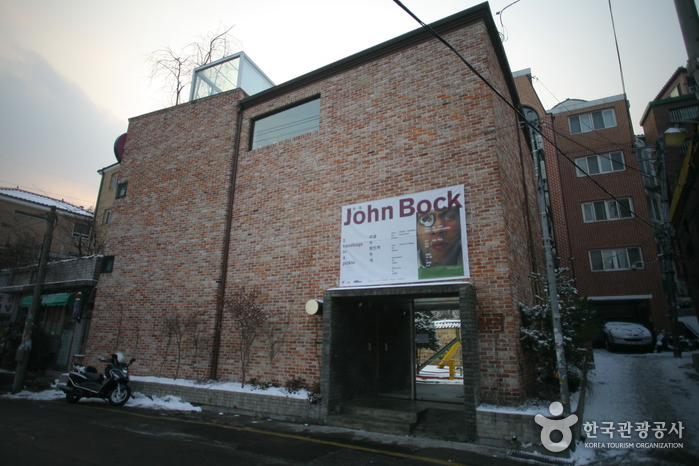
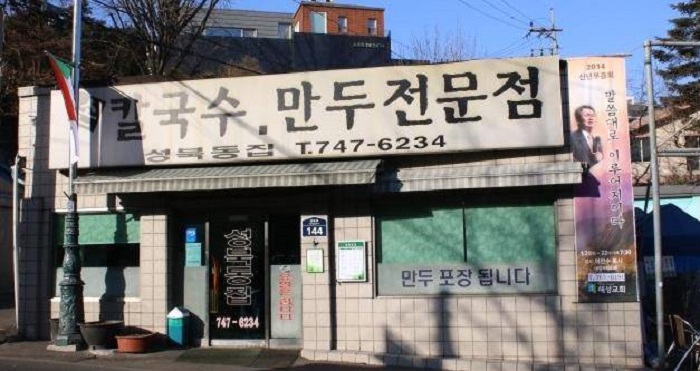
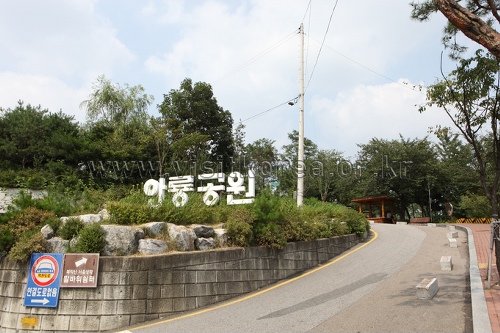
![Bukchonmaru hanok guesthouse [Korea Quality] / 북촌마루한옥게스트하우스 [한국관광 품질인증]](http://tong.visitkorea.or.kr/cms/resource/32/2574032_image2_1.jpg)
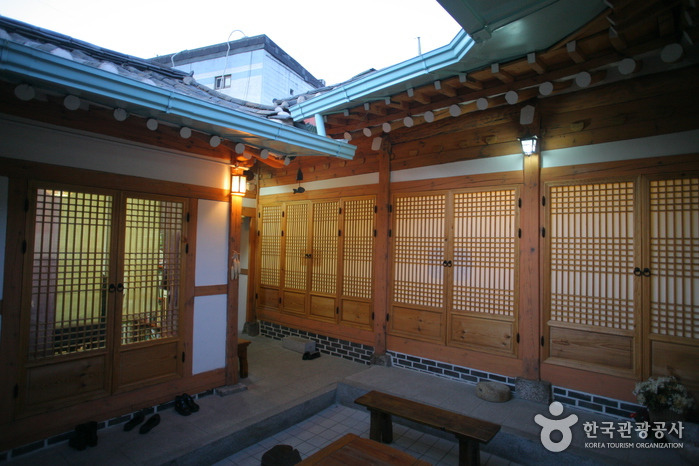
![Inwoohouse [Korea Quality] / 인우하우스 [한국관광 품질인증]](http://tong.visitkorea.or.kr/cms/resource/64/2633664_image2_1.jpg)
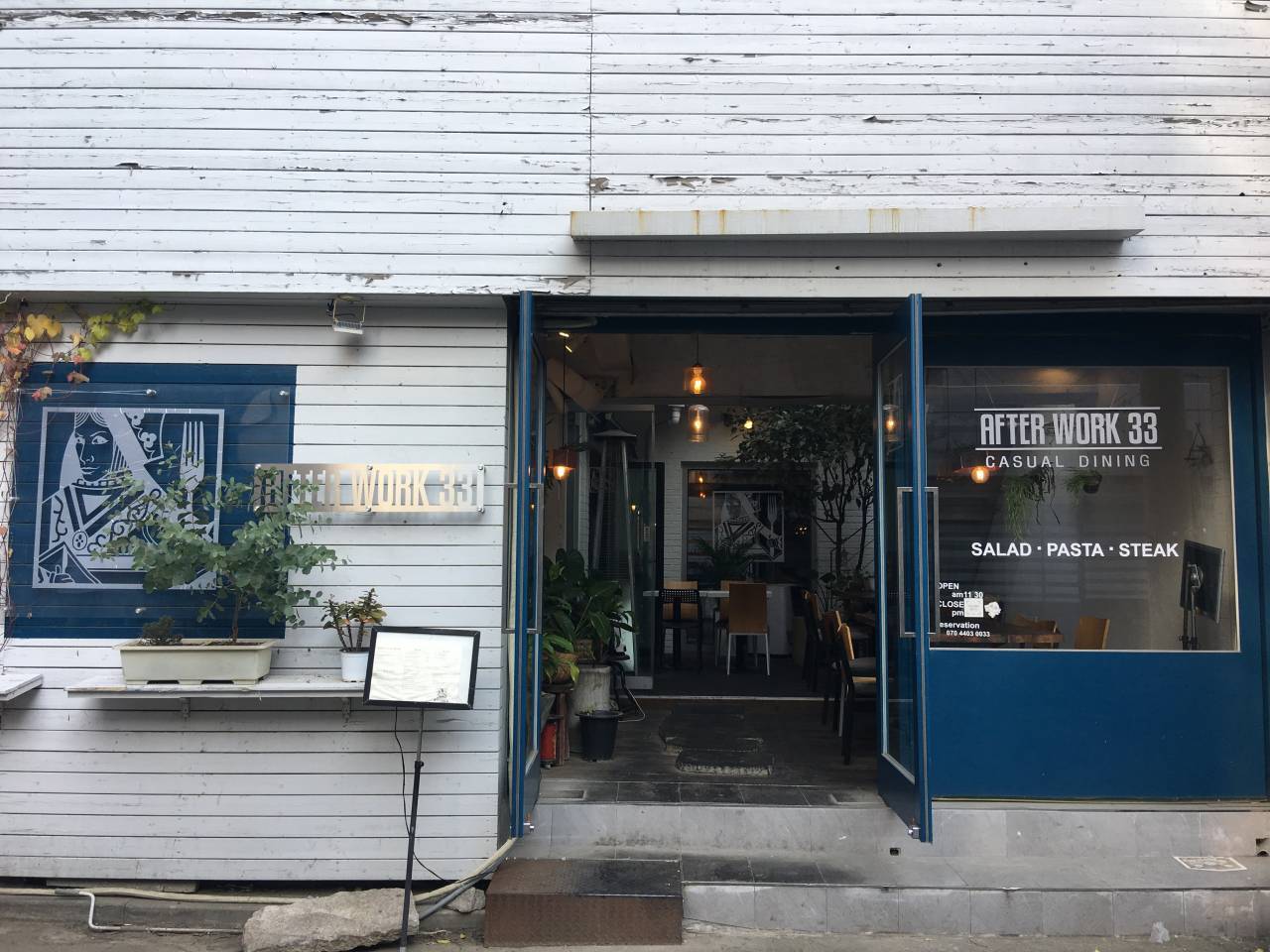
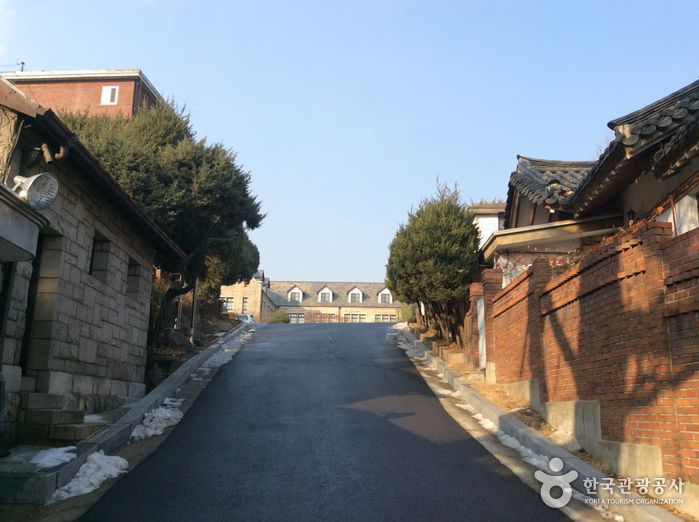
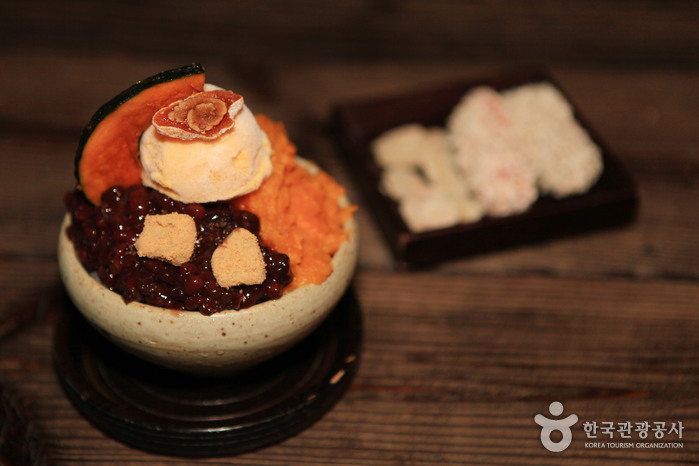
 Français
Français
 한국어
한국어 English
English 日本語
日本語 中文(简体)
中文(简体) Deutsch
Deutsch Español
Español Русский
Русский